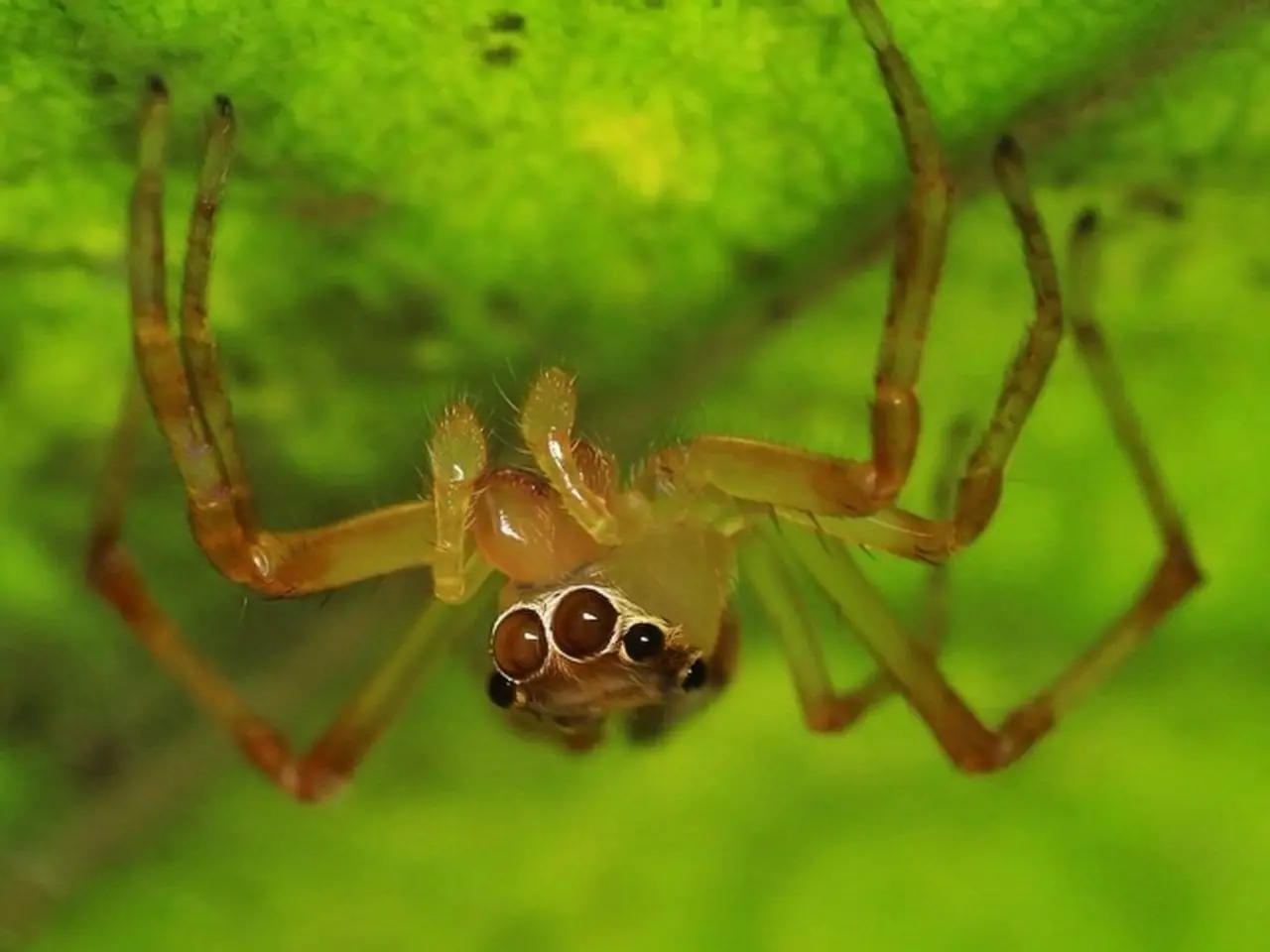Spiders' Colorful Disguises: From Camouflage to Communication
Spiders, often misunderstood, exhibit a fascinating array of colors and behaviors. Recent discoveries reveal their vibrant hues serve various purposes, from camouflage to communication.
Take the green lynx spider, which blends into leaves and flowers, launching surprise attacks on prey. Meanwhile, the mirror spider adjusts silvery patches on its abdomen to mimic surroundings, a stress-induced chameleon effect.
Ladybird spiders adopt a ladybug disguise to deter predators, while the Indian ornamental tarantula combines electric blue coloring for camouflage. The goldenrod crab spider shifts its hue to match flowers, ambushing insects unawares.
In Brazil, the jewel tarantula dazzles with iridescent flashes of blue, pink, and gold. Males of the peacock spider use vibrant colors and rhythmic leg displays to woo mates. Some spiders, like the Singapore blue tarantula, prefer hiding in tree cavities, their cobalt blue legs and golden body a secret until revealed.
Golden silk orb-weavers, however, are hard to miss. Their webs can ensnare birds, and their shimmering golden bodies make them stand out.
From the humble green lynx to the dazzling golden silk orb-weaver, spiders showcase a stunning range of colors and patterns. These aren't mere decorations; they're essential tools for survival, helping spiders blend in, attract mates, or warn predators. Each hue and design tells a story, revealing the intricate web of life these arachnids weave.
Read also:
- Budget cuts at federal and state levels jeopardize advancements in fighting HIV and AIDS within Dallas County
- Strategies for Maintaining and Boosting Physical Activity as You Grow Older
- Understanding Prediabetes: A Precursory Condition to Diabetes
- Strategies for Strengthening a Nigerian Infant's Immune System







